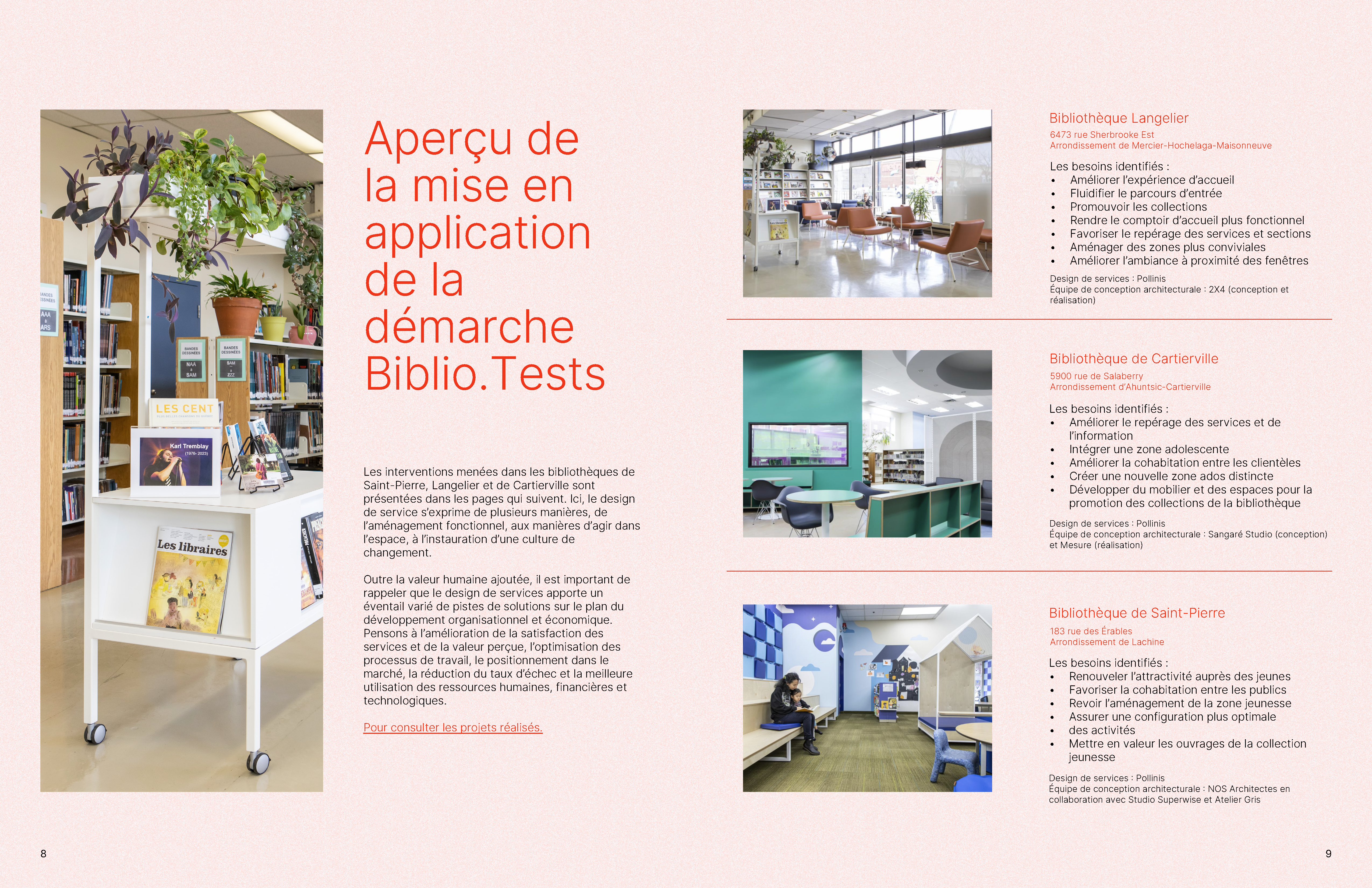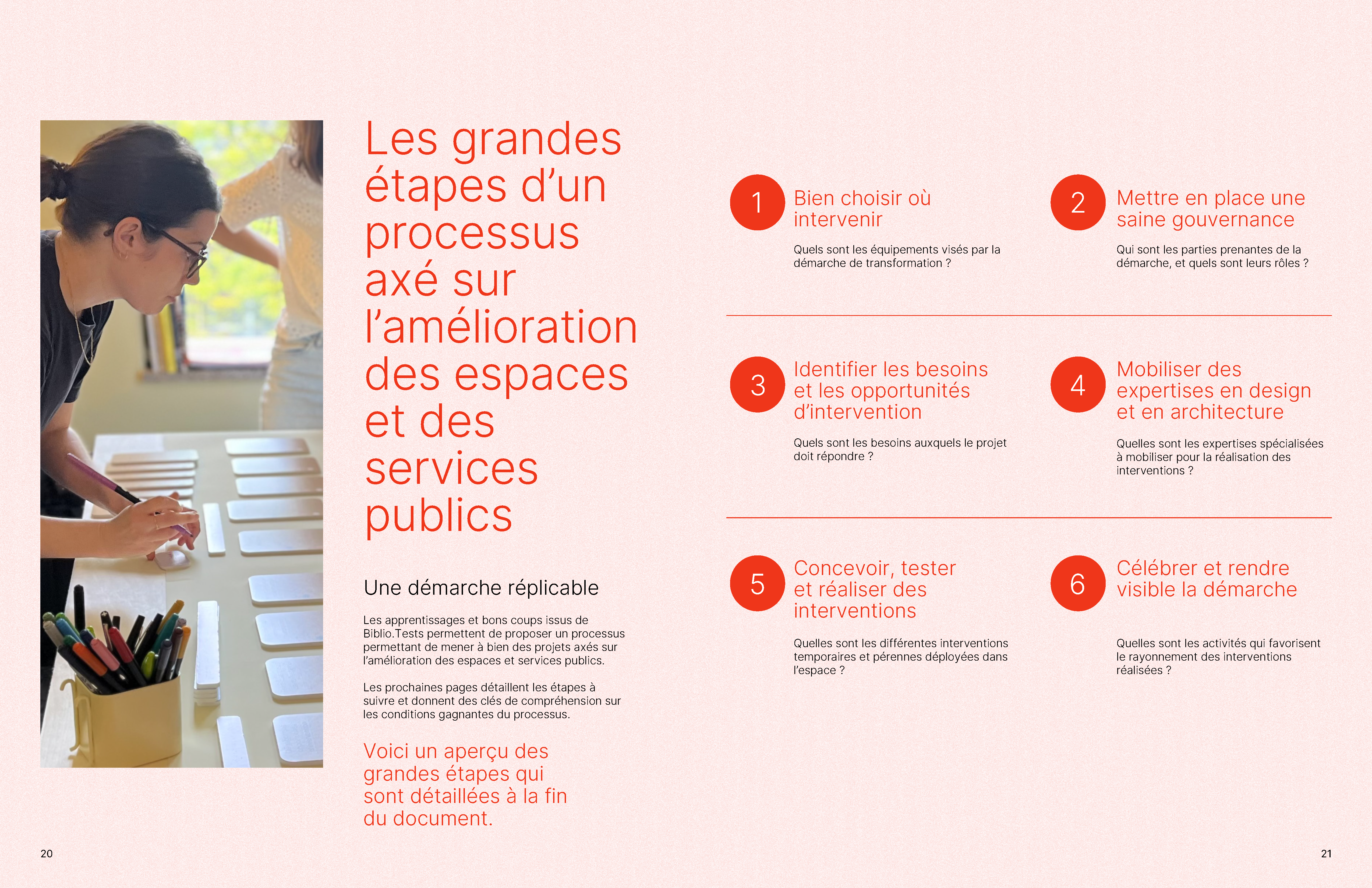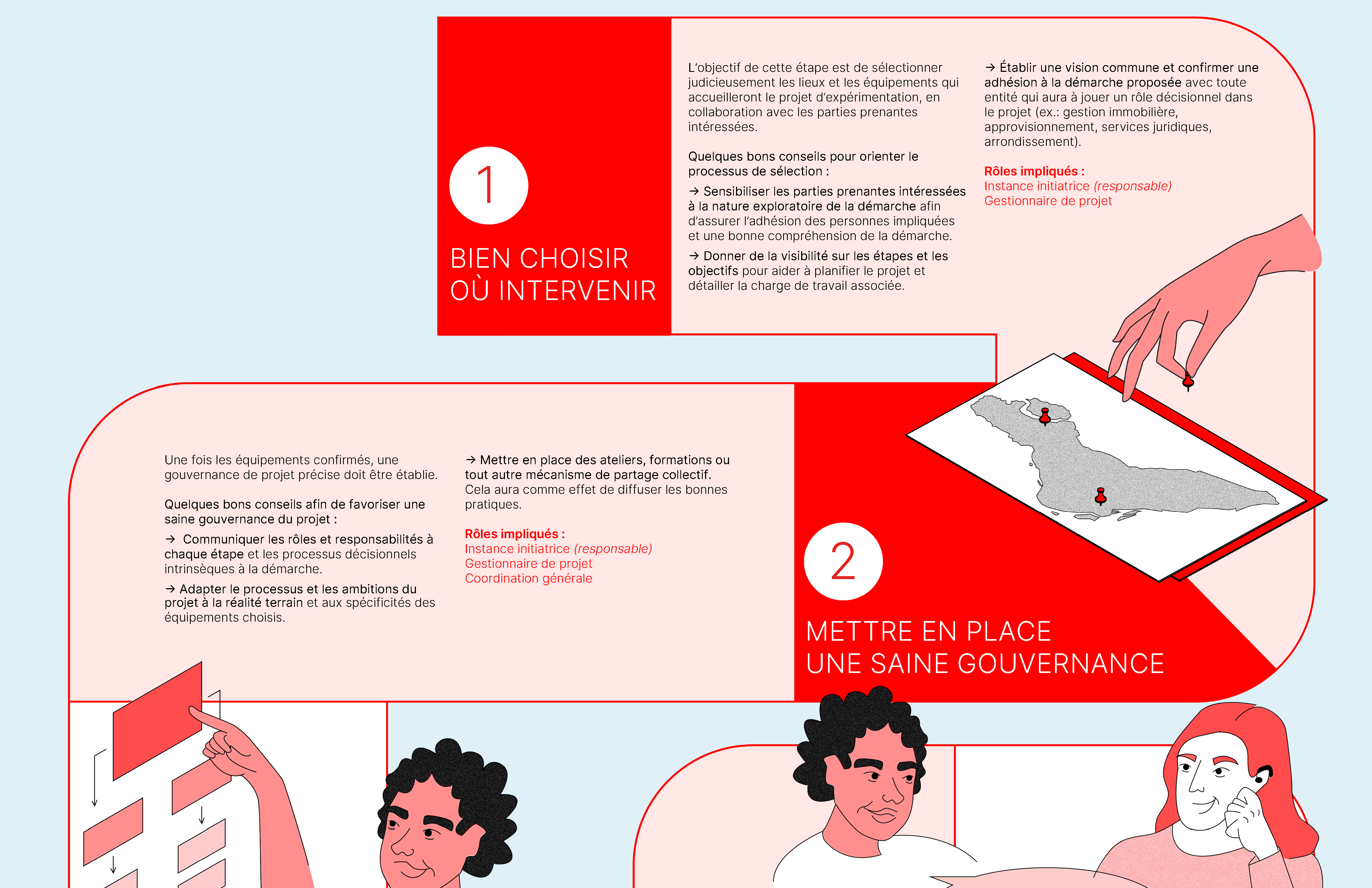The Bureau du design, in collaboration with Montréal’s Service de la culture and the boroughs of Lachine, Mercier–Hochelaga-Maisonneuve and Ahuntsic-Cartierville, piloted an experimental project in service design, which also involved designers and architects, to jointly consider interventions for making libraries more resilient.
We tested service design by means of observations, dialogue, and prototyping in the libraries. Explore the results and see how these interventions have improved design and the user experience in each space!
Service design is an approach that considers the form and function of services from the perspective of users or customers. The purpose of the discipline is to ensure that the service interface is useful, usable and desirable from the point of view of the user or client and effective, efficient and differentiating from that of the provider. This approach is useful among other things for rethinking municipal services and the way they are delivered to users (employees, businesses, residents, etc.) so as to respond appropriately to their needs and expectations.
1. Adapting library services to the pandemic context
This design-lab project, developed during COVID, aimed to ensure easier, more welcoming and safer access to libraries during the various pandemic restrictions, including physical distancing requirements. This swiftly implemented (in approximately two months) exploratory approach leveraged service design concepts, emphasizing creativity, innovation and rapid prototyping to enable temporary arrangements. Experts analyzed the user pathways and indoor layouts of three participating libraries: Le Prévost, Marc-Favreau and Rivière-des-Prairies. That experience resulted in a practical guide, produced and shared throughout the Montréal library network so that managers and librarians could draw inspiration from it and replicate the solutions.
To view the guide (in French) and the self-diagnosis tool, produced by Meilleur Monde in collaboration with Alexandre Landry Architecte and Studio Tagteam, visit this page.
2. Biblio.Tests
The temporary interventions revealed a wealth of needs and potential for enhancing libraries, which are living environments. The experimentations conducted for the design-lab project now aimed at optimizing libraries’ spaces for the longer term. The Biblio.Tests project focused on libraries that had no major renovation or expansion work scheduled, so as to make positive contributions to the spaces. Following consultations with the boroughs and a summary needs analysis, three libraries were chosen: Saint-Pierre, Cartierville and Langelier.
More information about the project process and intentions as well as the work conducted is presented in the following tabs.
As with the earlier exercise, Biblio.Tests emphasized service design and rapid prototyping in three libraries. The difference this time was that the refits were more elaborate and, above all, permanent. The team focused on a different aspect in each space, demonstrating the potential of service design to inform spatial and behavioural changes, and even immaterial ones.
To encourage scaling-up of the principles explored and to inspire stakeholders to action, the initiative was fully documented and shared. It proved to be a unifying process and brought a consistency to the interventions, regardless of their scale. Taken together, the three solutions provide a sort of catalogue of inspiration.
To obtain critical feedback on the project learnings and recommend an enhanced approach as well as a reference tool, the Bureau du design worked with the social design lab ohisse.
Together, they consulted the full range of stakeholders: library staff (managers, librarians and other employees), users (individuals and groups, including toddlers, children, teens and adults), the service designers, architects and other designers, along with the project team at the Bureau du design. They also visited and recorded observations in the refitted spaces.
On these bases, the process implemented at the very start of the project was examined, reviewed, reworked and enhanced. This resulted in a more thorough, documented and explainable process, designed to ensure smooth-running projects geared toward enhancing public spaces and services.
Among other things, the outcome showed that the approach and interventions led to positive transformations of the spaces as well as library services, in terms of wayfinding, traffic flow and user autonomy. The spaces are more user-friendly and flexible, and the refits have helped strengthen a sense of belonging in the areas involved.
This intervention rationale could be applied to other public places, such as community centres, maisons de la culture or sports facilities.
Explore the steps to follow and the essential conditions for ensuring the process runs smoothly.
Reference tool for an experimentation process in public service design (in French), (PDF, 28 pages)




